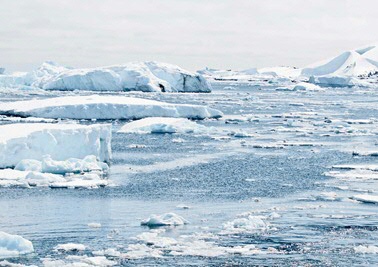Why it rains more in the Arctic

The strong warming of the Arctic has many consequences. One example is the increase of precipitation in the area, which will mainly be falling in the form of rain, rather than snow. The question is whether this increased rainfall is simply caused by the fact that there is more precipitation, or by the heating of the atmosphere, or a combination of both. University of Groningen and KNMI researcher Prof. Richard Bintanja answers this question in his article ‘The impact of Arctic warming on increased rainfall’, which was published in Scientific Reports on Tuesday 30 October 2018.
The data from various detailed climate models show that an average 70 percent of the increased rainfall in the Arctic can be attributed to the heating of the atmosphere. This heating causes precipitation in the form of snow to melt in the relatively temperate atmosphere and reach the earth as rain. There appears to be great variation across locations and seasons, however, because the percentage of precipitation that falls as rain increases relatively steeply as it gets warmer, though only within a limited temperature range of around 0 degrees Celsius. It is exactly in those areas and seasons, for example near the North Pole in summer, where climate change will cause a steep increase in rainfall.
Richard Bintanja: ‘This increased rainfall has a profound effect on the melting of sea ice and glaciers, but also on hydrology, ecology and the melting of the permafrost layer in the Arctic’.
| Last modified: | 30 October 2018 5.26 p.m. |
More news
-
24 March 2025
UG 28th in World's Most International Universities 2025 rankings
The University of Groningen has been ranked 28th in the World's Most International Universities 2025 by Times Higher Education. With this, the UG leaves behind institutions such as MIT and Harvard. The 28th place marks an increase of five places: in...
-
05 March 2025
Women in Science
The UG celebrates International Women’s Day with a special photo series: Women in Science.
-
16 December 2024
Jouke de Vries: ‘The University will have to be flexible’
2024 was a festive year for the University of Groningen. In this podcast, Jouke de Vries, the chair of the Executive Board, looks back.
